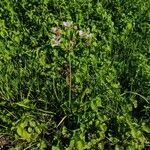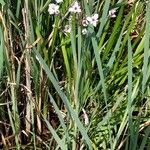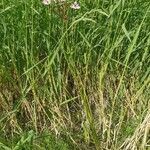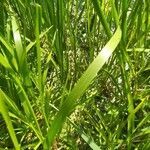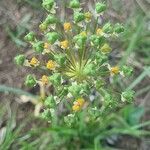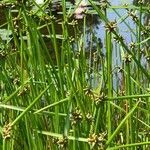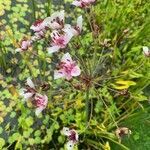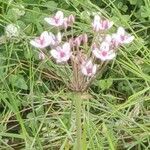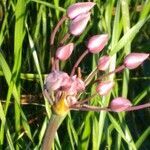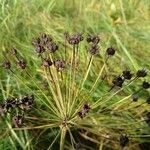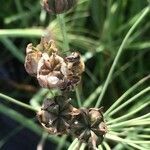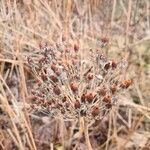Lvs basal, erect, floating, or submersed in water up to several m deep, linear, to 1 m, 5–10 mm wide; scape 1–1.5+ m; fls numerous, 2–2.5 cm wide, on pedicels 5–10 cm;2n=20, 26, 39. Native of Eurasia, thoroughly established on shores and riverbanks in the St. Lawrence R. valley and in Lake Champlain, and more recently spread inland, even to N.D., S.D., Mont., and Ida. June–Aug.
A rush which grows 1.5 m tall and spreads 75 cm wide. It has underground stems or rhizomes. The leaves are long, pointed and dark green. They can be 1 m long and 1.3 cm wide and twisted. The base is triangle shaped forming a sheath. The flowers are borne in umbels. The flower stalks are round and in the axils of leaves. They can be 1.5 m high. The flowers are reddish-white.
Herbs, to 150 cm. Leaves linear, to 2.7 m. Inflorescences with 20--25 flowers; scape to 150 cm. Flowers 2--2.5 cm wide; pedicels 4--10 cm; outer tepals elliptic, 6--7.5 × 2--2.5 mm, apex acute, inner tepals oblanceolate, 9--11.5 × 4.5--6 mm, apex obtuse, erose; filaments 3--4.5 mm, anthers 1 mm. Follicles 1 cm.
